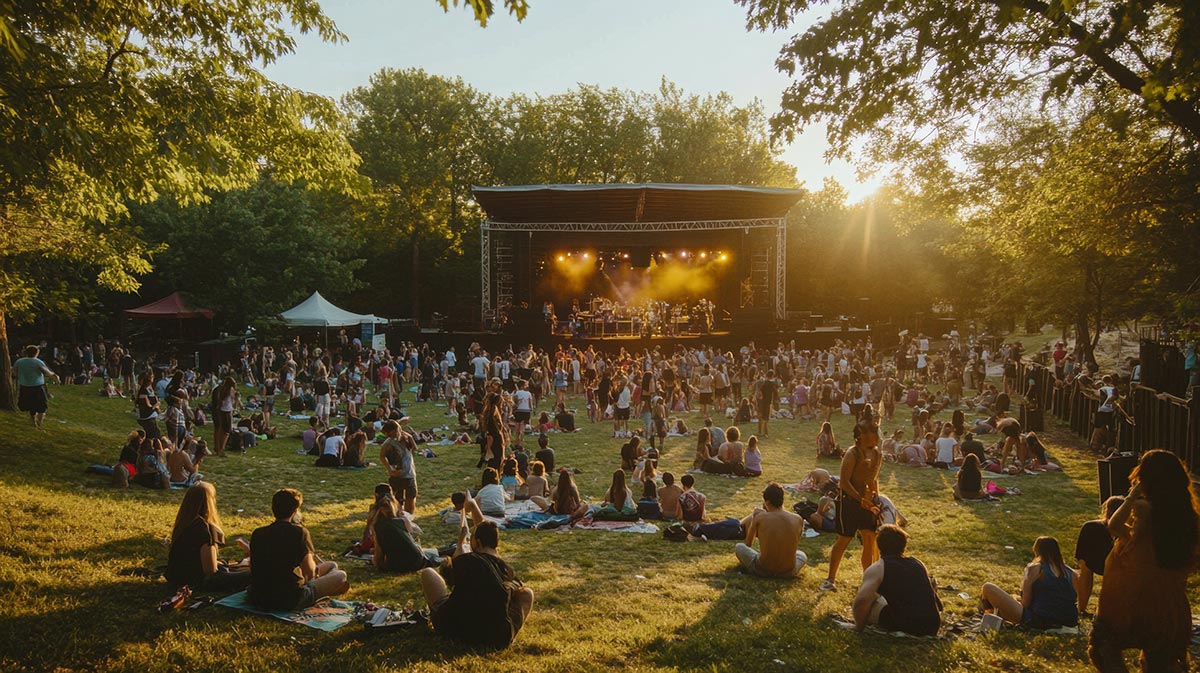The Sound of Change
There’s something special about standing in a crowd, feeling the bass in your chest, and singing along with thousands of others. Music festivals and concerts create powerful memories—but they also create a lot of waste. As someone who works in clean energy and cares deeply about sustainability, I’ve often looked around at the aftermath of big events—plastic bottles, diesel generators, food waste—and thought: “We can do better than this.”
The good news? We are doing better. The music industry is beginning to hit a new note—one that’s greener, cleaner, and more responsible. Here are five inspiring ways music events are embracing sustainability without losing the magic.
1. Swapping Diesel for Clean Energy
Traditionally, music festivals have relied heavily on diesel generators to power stages, lights, and food vendors—especially in remote outdoor locations. But now, we’re seeing a shift toward renewable energy.
Some festivals are investing in solar-powered stages or using battery storage systems that store energy during the day and release it at night. Others are plugging into local power grids where available, sourcing electricity from wind or solar farms.
I recently attended a regional music event that used a portable solar rig to power an entire acoustic stage. It was quiet, efficient, and completely emission-free. As battery tech continues to improve, this will only get more common.
2. Bye-Bye Single-Use Plastics
If you’ve ever been to a concert or outdoor event, you’ve probably seen the mountains of plastic cups and water bottles by the end of the night. It’s one of the most visible—and fixable—problems at music events.
Now, many organizers are implementing reusable cup programs or offering branded stainless steel cups that fans can refill throughout the event. Some festivals even have deposit systems: return your cup or bottle and get your deposit back. Simple. Smart. Effective.
I’m also seeing more free water refill stations and bans on selling single-use plastic entirely. Fans get the message quickly—people are more than willing to bring a refillable bottle if the infrastructure is there.
3. Greener Transportation Options
Getting to and from a concert is a major contributor to its overall carbon footprint. Think about it: thousands of cars idling in parking lots or driving long distances just to attend one show.
More events are now encouraging public transportation, shuttle buses, and bike parking. Some even offer discounts on tickets if you take a train or rideshare. At one music festival in the South I attended, there was a carpool contest—the group with the most passengers got upgraded passes and backstage access. It was a fun way to motivate people to think about their travel impact.
And for those who need to drive, some events are partnering with electric vehicle charging networks to make greener road trips easier.
4. Better Waste Management
Waste at large events goes far beyond just plastic. There’s leftover food, packaging, cardboard, and more. That’s why festivals are now getting smarter about composting, recycling, and even donating unused food to local shelters.
At one recent festival, volunteers stood at sorting stations to help attendees place items in the right bins: landfill, recycling, or compost. It wasn’t preachy—it was educational. And it made a big difference.
Some festivals go a step further by partnering with local farms to take food scraps for composting or with nonprofits that help redistribute excess meals. When people see their favorite events making the effort, they follow suit.
5. Spreading the Message
One of the most powerful tools the music industry has is its platform. Artists, promoters, and event organizers can reach millions of fans—and when they use that voice to promote sustainability, people listen.
Musicians like Billie Eilish and Coldplay have taken bold steps toward eco-conscious touring, from cutting emissions to banning plastic backstage. And festivals like Lightning in a Bottle and Shambhala weave sustainability into the entire experience, with workshops, art installations, and green vendors.
These aren’t just “green add-ons”—they’re part of the story. And they help fans see that sustainability isn’t about sacrifice—it’s about being more intentional, more creative, and more connected to the world around us.
A Greener Future for Music
Music brings people together. It inspires, energizes, and heals. That’s why it’s the perfect place to start conversations about the environment. If we can sing in harmony, we can live in harmony with our planet, too.
As someone who works every day to push for a cleaner, more sustainable future, it’s incredibly encouraging to see this shift in the live event world. From solar stages to reusable cups, the green stage is no longer a fringe idea—it’s becoming the new standard.
We don’t have to stop going to festivals or seeing live music to be responsible. We just have to support the events that are doing it right, make smarter choices while we’re there, and keep pushing for better.
Because when the lights come up and the music fades, the real encore is the future we leave behind.
